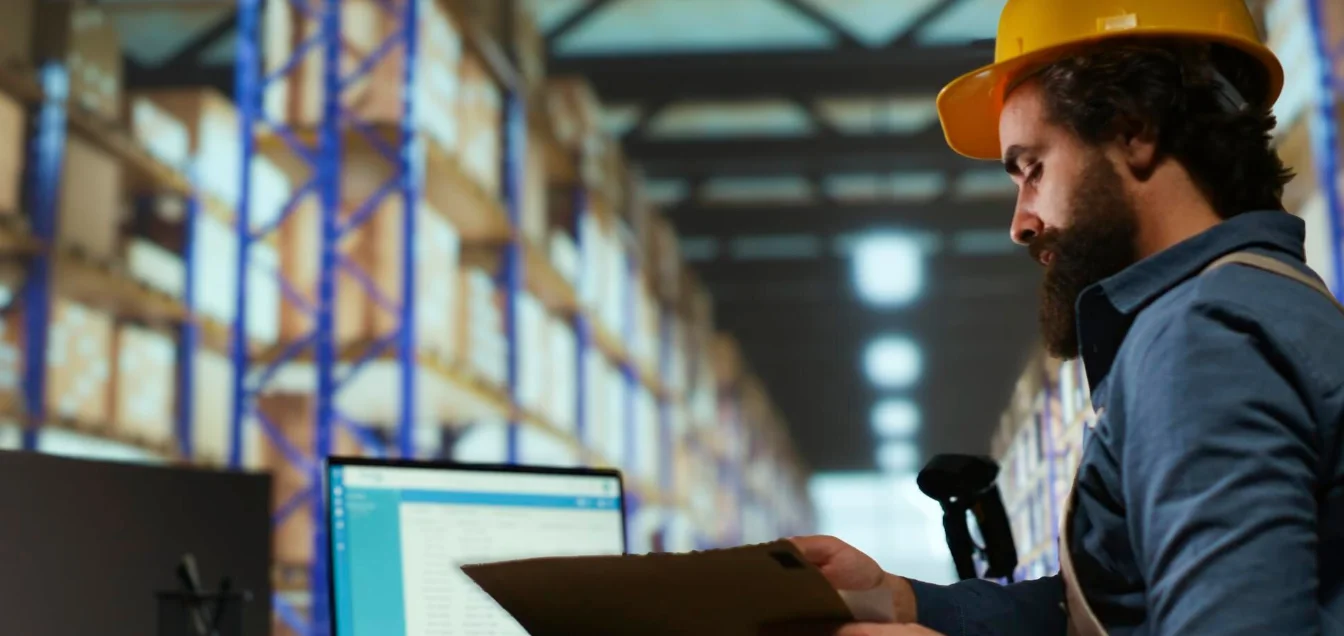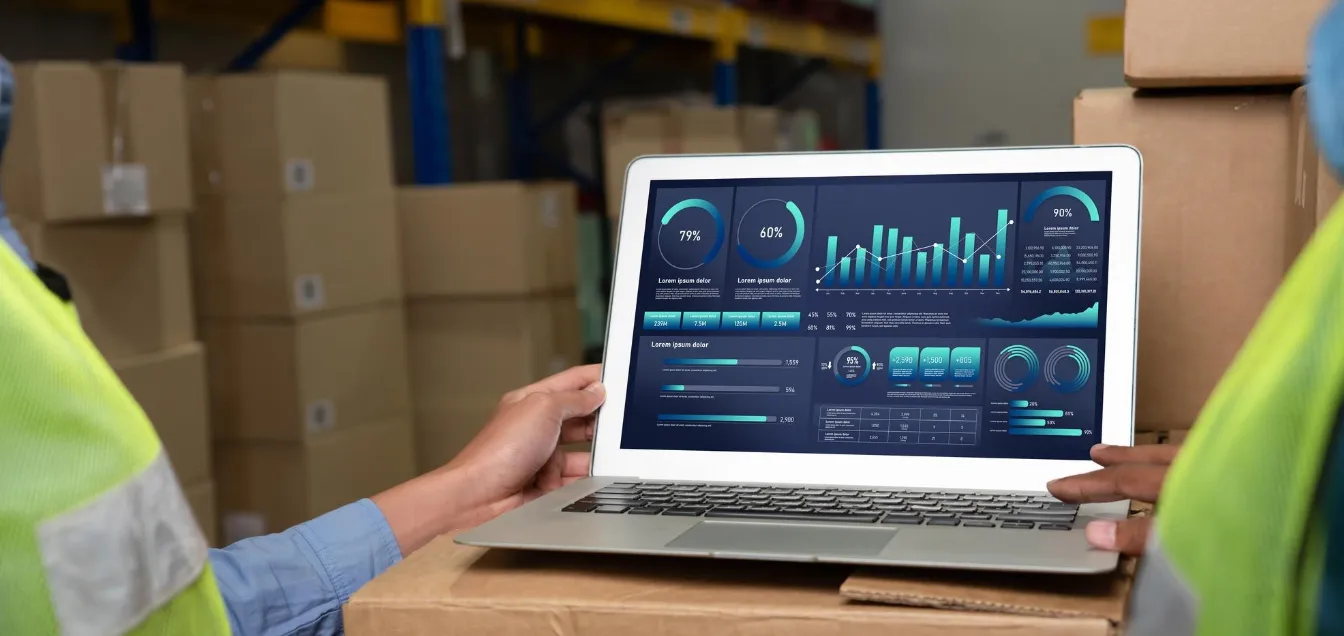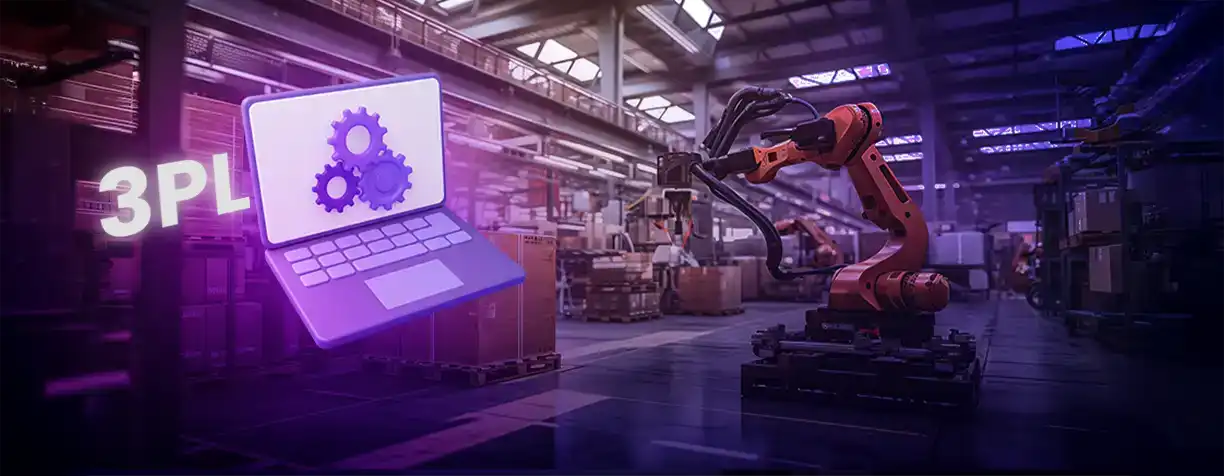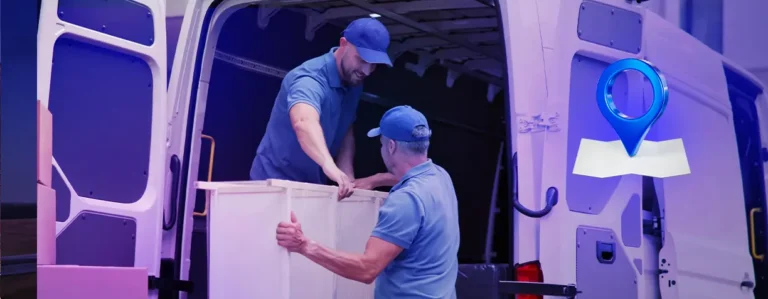The landscape of third-party logistics (3PL) is changing rapidly, driven by innovation in 3PL services that enable companies to deliver efficiencies and enhanced customer experiences. By examining key trends and technologies that are shaping the future, we can see the many ways in which the logistics sector is evolving. As we look toward 2025, the role of technology and automation within the industry has never been more significant, and companies that effectively harness these advancements are better positioned to thrive in an increasingly competitive environment.
Table of Contents
Automation in 3PL in 2025
Automation in 3PL continues to evolve, enhancing speed and accuracy across various processes. From robotic picking systems to automated inventory management, 3PL companies can significantly reduce the time it takes to fulfill orders and minimize human error. A notable example is the integration of autonomous mobile robots (AMRs), which are predicted to account for nearly 30% of warehouse operations by 2025. This innovation in 3PL not only allows logistics providers to respond to market demands with agility but also contributes to lower operational costs.
In addition to AMRs, automated sorting systems are becoming more prevalent, allowing for real-time processing of incoming and outgoing shipments. These systems reduce the physical demands on employees and help businesses scale their operations to meet increasing consumer demands, especially in the realm of last mile delivery in Canada. Furthermore, automated data capture technologies, such as RFID (radio-frequency identification), enhance inventory accuracy and help streamline supply chain management, providing a comprehensive view of assets and facilitating better decision-making processes, all made possible through advanced fulfillment technology.
Technology in 3PL in 2025

Technology is at the heart of innovation in 3PL. Advanced software platforms that enable real-time tracking of shipments, inventory management, and customer relationship management are becoming essential tools for third-party logistics providers. Cloud-based solutions facilitate seamless communication between all stakeholders in the logistics chain, ensuring everyone has access to the same data and can act upon it promptly.
One prominent trend is the increased use of machine learning and artificial intelligence (AI) for predictive analytics and operational optimization. By analyzing data from various sources, logistics firms can forecast demand, optimize routes, and enhance warehouse efficiency. For instance, using AI algorithms, companies like DHL and UPS can predict shipment delays and dynamically adjust logistics strategies. This innovation in 3PL not only enhances adaptability but is essential for maintaining a competitive advantage and meeting growing consumer expectations for fast delivery.
Moreover, the Internet of Things (IoT) is revolutionizing the way logistics operate, allowing real-time tracking of shipments via connected devices. Sensors placed on cargo can notify shippers of temperature fluctuations, humidity levels, or any shock that could compromise the integrity of the products being transported. Embracing these innovations in 3PL is crucial for any provider looking to remain relevant in 2025 and beyond.
Personalization in 3PL Services
Personalization has emerged as a crucial factor in 3PL services. Customers now expect tailored experiences, and companies that adopt innovation in 3PL are better positioned to meet these demands. By utilizing advanced data analytics and artificial intelligence, logistics companies can offer customized service offerings that ensure clients receive packages that reflect their unique needs.
For instance, firms can analyze customer history and behavior to provide personalized recommendations on logistics solutions, select optimal shipping methods, and even customize delivery timelines. A well-known example is Amazon, which utilizes data-driven insights to inform its shipping strategies, personalizing the customer experience down to the hour of delivery. Such innovation in 3PL has given rise to customer-centric fulfillment models, significantly boosting customer retention rates and satisfaction.
Additionally, companies that offer multi-channel retailing solutions are prioritizing personalization in their logistics strategies. By utilizing warehouse management systems (WMS) that connect directly with e-commerce platforms, they can offer customizable packaging options and enhance last mile delivery in Canada, giving shoppers a sense of ownership over their purchasing experience. This shift towards utilizing advanced fulfillment technology represents a move away from traditional logistics practices to more integrative, data-informed approaches.
The Future of 3PL in Canada
The future of 3pl logistics in Canada looks promising, with robust growth projected for the sector. A report by Statista indicates that the Canadian logistics market is expected to grow by approximately 6% annually from 2022 to 2025. As part of this growth, innovation in 3PL solutions, such as green logistics, are set to play a vital role in how logistics operations are managed, helping companies reduce their carbon footprint while simultaneously improving efficiency.
One major driver of change in the Canadian logistics landscape is the increasing demand for eco-friendly practices. Many companies are becoming aware of their environmental impact and are actively seeking ways to mitigate it. As a result, innovations in 3PL, such as green logistics initiatives—like optimizing transport routes to minimize fuel consumption—are becoming common practices among leading providers. Organizations like Canada Post have initiated programs to offset emissions generated by their operations, setting an example for others within the industry.
Furthermore, advancements in technology related to 3PL fulfillment in Canada are also paving the way for service enhancements. As Canadian businesses adopt new technologies, they can expect reduced delivery times, improved inventory accuracy, and enhanced customer interaction capabilities. This transformation signals a bright future for third-party logistics as businesses adapt to the evolving consumer landscape.
Impact of Same-Day Delivery on 3PL
Same-day delivery has transformed consumer expectations and become a vital service offering in the 3PL landscape. The convenience of immediate delivery has become a major differentiating factor, compelling logistics providers to rethink their operational frameworks. Companies that embrace innovation in 3PL are investing in last-mile delivery capabilities, particularly in urban areas, to fulfill customer demand.
To compete in the same-day delivery arena, companies like FedEx and DelGate have introduced multi-tiered service options that prioritize speed and flexibility. Innovations in 3PL have spurred logistics providers to adopt advanced order management systems to streamline the coordination of deliveries as the demand for rapid order fulfillment continues to grow. By optimizing their delivery networks, they can address logistics challenges while ensuring customer satisfaction.
Moreover, same-day delivery incentivizes the use of local warehouses strategically placed near urban centers. This leads 3PL providers to expand their 3PL warehouse services in Canada to include more urban fulfillment centers, ultimately improving delivery times and reducing transportation costs. Evidence suggests that companies offering same-day delivery options report higher customer retention and satisfaction rates, emphasizing the importance of adapting to consumer preferences.
Enhancing Warehouse Efficiency in 3PL
Enhancing warehouse efficiency remains a priority for 3PL providers. Automated storage and retrieval systems (AS/RS) are among the most impactful innovation in 3PL strategies. This technology significantly streamlines operations by increasing storage density, reducing pick times, and optimizing labor efficiency. In fact, companies that implement AS/RS can see operational costs reduced by up to 33%.
One vivid example is Alibaba’s investment in robotic automation for their warehouses. By employing robotic systems to handle inventory, they have successfully decreased processing times and improved order accuracy. Innovation in 3PL is driving many Canadian logisticians to adopt similar robotic solutions to stay relevant in a competitive market.
In addition to automation, organizations are turning to advanced data analytics tools to inform their warehouse layouts and operations. Innovation in 3PL is empowering providers to analyze patterns in order volume, allowing them to reconfigure their warehouse setups to minimize the time employees spend locating items. For instance, implementing a demand-driven inventory strategy can significantly boost efficiency—ensuring that fast-moving items are strategically positioned for easier access.
Data-Driven Logistics

The shift toward data-driven logistics is a hallmark of innovation in 3PL. Companies are increasingly utilizing predictive analytics to anticipate demand and make informed decisions regarding inventory management and route optimization. For example, transportation management systems (TMS) provide valuable insights into shipping times, costs, and carrier performance.
By analyzing data trends, 3PL firms can improve operational efficiency while offering their clients insightful reporting. Businesses can minimize losses and enhance profitability through data-driven strategies. This shift is evident in companies that utilize AI algorithms and machine learning to predict behaviors and react to supply and demand fluctuations.
For instance, companies such as XPO Logistics have begun investing heavily in data analytics, illustrating the innovation in 3PL that results in improved transparency and efficiency within their supply chains. This capability allows them to effectively track shipments, manage inventory levels, and identify potential disruptions before they escalate. Ultimately, embracing a data-driven approach helps companies remain competitive and meet the demands of a rapidly evolving logistics landscape.
AI in 3PL Operations
Artificial Intelligence (AI) is redefining operational strategies within 3PL companies. By deploying AI technologies, logistical operations can optimize supply chains and manage inventory more effectively. For example, machine learning algorithms can analyze historical data to predict demand and optimize orders accordingly.
Companies using AI also benefit from enhanced risk management, showcasing the innovation in 3PL. By employing predictive analytics, they can foresee potential disruptions in supply chains, including weather-related issues or market fluctuations. UPS, for instance, uses advanced algorithms to optimize delivery routes, significantly reducing both travel times and fuel consumption. This level of efficiency is vital for maintaining competitiveness in the ever-demanding shipping market.
Evolution of 3PL Services
The evolution of 3PL services is characterized by continuous adaptation to market demands. Third-party logistics providers are now offering a broader range of services than ever before. Flexible solutions, such as transloading services in Canada and cross-docking in Canada, cater to a diverse range of client requests.
Transloading involves transferring goods from one form of transportation to another at a logistics hub, reflecting the innovation in 3PL. This service has become increasingly valuable as businesses look to maximize efficiency and reduce shipping costs. As companies aim for quicker delivery times, transloading is a key factor that helps streamline their operations.
Essential Equipment for a Top-Tier 3PL
To remain competitive, top-tier 3PL providers invest in cutting-edge equipment. Essential tools include barcode scanning systems, automated forklifts, and robust warehouse management systems (WMS) that facilitate seamless operations. These technologies enhance accuracy, improve inventory tracking, and streamline order fulfillment processes.
One notable example of essential equipment is the “smart conveyor,” used to facilitate the movement of goods within a warehouse. This technology reduces physical demands on employees and optimizes the flow of goods. Additionally, mobile devices equipped with scanning technology enable employees to track inventory in real-time, decreasing the risk of error.
Moreover, investing in safety equipment, such as personal protective gear and automated safety systems, is crucial for fostering a safe working environment, showcasing innovation in 3PL. By prioritizing safety, 3PL providers can achieve a higher level of operational efficiency, ensuring that warehouses remain compliant with industry regulations.
3PL EDI for Third Party Logistics
Electronic Data Interchange (EDI) is an essential component for facilitating communication in third-party logistics. The integration of EDI systems offers significant advantages, such as reducing manual data entry errors and speeding up the order processing timeline. This synergy between clients and 3PL providers exemplifies the innovation in 3PL, ensuring transparency and efficiency throughout the logistics process.
Adopting EDI allows businesses to communicate in real-time, showcasing innovation in 3PL and improving the flow of information between suppliers, manufacturers, and transporters. Companies equipped with EDI capabilities expend fewer resources managing paperwork and can focus on optimizing logistics operations.
Freight Calculations

Accurate freight calculations are vital for maintaining profitability in 3PL operations. Implementing advanced freight management software allows companies to optimize shipping costs while providing their clients with transparent pricing models. This capability supports an effective strategy focused on customer satisfaction while ensuring operational efficiency.
Many logistics providers are turning to predictive analytics to refine their freight calculations. By leveraging historical shipping data and current market trends, providers can forecast costs more accurately and make informed decisions regarding shipping routes, carrier selection, and pricing strategies.
Additionally, logistics software has greatly improved the accuracy of freight calculations, showcasing innovation in 3PL by allowing companies to account for numerous variables, such as weight, dimensions, and delivery timelines. By automating this process, 3PL providers can reduce operational costs and enhance customer relationships through transparent, accurate pricing.
Conclusion
As we approach 2025, the continued innovation in 3PL highlights the importance of technology and automation within the logistics sector. Canadian fulfillment centers and courier services in Canada are becoming crucial players, maximizing efficiency while meeting the growing demand for rapid delivery solutions. The shift toward green logistics and area-focused services, such as Innovative Furniture Courier offerings and Nationwide Big and Bulky Product Delivery, allows providers to cater to the evolving needs of consumers.
In conclusion, embracing these emerging trends will ensure that businesses remain competitive in the dynamic and ever-evolving logistics landscape, highlighting the importance of innovation in 3PL. By leveraging cutting-edge technologies and establishing adaptive strategies, 3PL providers can maintain their relevance and profitability in the years to come.
Metric Overview of Key Trends in 3PL
| Metric | Value |
| Projected Annual Growth in Canadian Logistics (2025) | 6% |
| Percent of 3PL Using AI | 40% |
| Reduction in Operational Costs with AS/RS | 33% |
| Expected Market Expansion for Data-Driven Logistics | 8% |
| Increase in Same-Day Delivery Services | 25% |
| Growth in Eco-Friendly Practices in 3PL | 30% |
Frequently Asked Questions (FAQs)
- How does automation improve 3PL services?
- Automation enhances efficiency, reduces errors, and speeds up the fulfillment process.
- Can I find a fulfillment service that specializes in bulky products?
- Yes, many Innovative Furniture Courier services specialize in Nationwide Big and Bulky Product Delivery.
- How do 3PL EDI systems impact operations?
- 3PL EDI systems streamline communication, reduce manual errors, and improve processing times, facilitating real-time data exchange among stakeholders.
- What are some examples of well-known 3PL providers?
- Companies like DelGate, FedEx, XPO Logistics, C.H. Robinson, and UPS provide comprehensive 3PL services.
- How do 3PL EDI systems impact operations?
- 3PL EDI systems streamline communication, reduce manual errors, and improve processing times, facilitating real-time data exchange among stakeholders.





